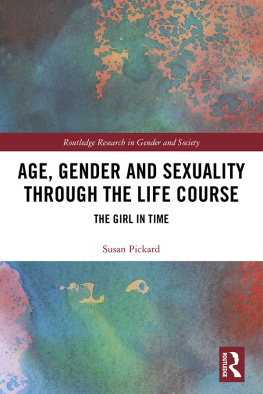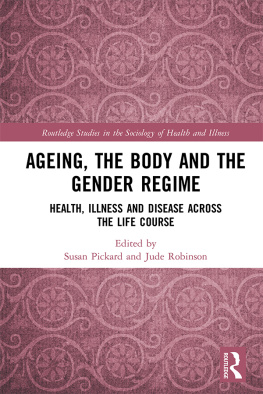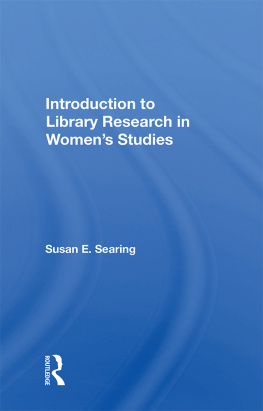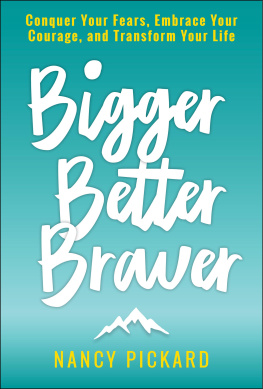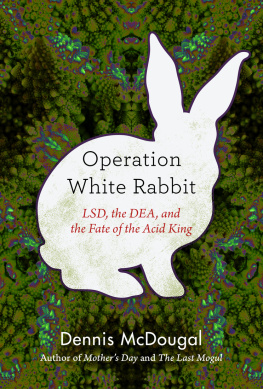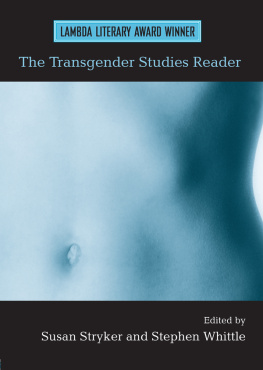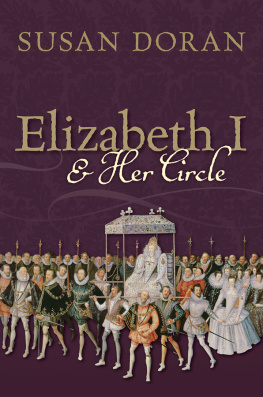This is a wonderful book which enriches the growing field of cultural studies of ageing, and brings to it a fresh, intersectional focus, and plenty of vivid contemporary examples. With great rigour, yet an enviable lightness of touch, Susan Pickard has written an engaging and accessible book that students will love.
Rosalind Gill, City University London
Susan Pickards Age Studies is a scholarly tour de force that brings into focus the various disciplines, histories, literatures and knowledges that have transformed us into modern subjects of age. Each chapter is an exciting discovery of the paths by which the social has coursed through our lives in the most intricate and intimate ways.
Stephen Katz, Trent University
Powerful use of text and images to engage students with key concepts and aims of the book.
Irene Hardill, Northumbria University
Susan Pickards approach to age studies is comprehensive and compelling, writing about concepts of class and gender, the body and culture. This is no dry account of ageing. Each chapter includes questions for the reader to consider, and chapter summaries make the book accessible to students. Pickard has a beautifully clear writing style. She introduces us to the Hag, to media images, her own experiences, and how we can tell our own stories about ageing. Pickards book is an invaluable addition to the shelf of any researcher or student of sociology and related fields.
Samantha Holland, Leeds Becket University
Susan Pickard is breathing life of cultural studies in aging studies which is to be applauded. It is an excellent, thought provoking and timely text.
Jason Powell, University of Chester
SAGE Publications Ltd
1 Olivers Yard
55 City Road
London EC1Y 1SP
SAGE Publications Inc.
2455 Teller Road
Thousand Oaks, California 91320
SAGE Publications India Pvt Ltd
B 1/I 1 Mohan Cooperative Industrial Area
Mathura Road
New Delhi 110 044
SAGE Publications Asia-Pacific Pte Ltd
3 Church Street
#10-04 Samsung Hub
Singapore 049483
Susan Pickard 2016
First published 2016
Apart from any fair dealing for the purposes of research or private study, or criticism or review, as permitted under the Copyright, Designs and Patents Act, 1988, this publication may be reproduced, stored or transmitted in any form, or by any means, only with the prior permission in writing of the publishers, or in the case of reprographic reproduction, in accordance with the terms of licences issued by the Copyright Licensing Agency. Enquiries concerning reproduction outside those terms should be sent to the publishers.
Library of Congress Control Number: 2016933341
British Library Cataloguing in Publication data
A catalogue record for this book is available from the British Library
ISBN 978-1-4462-8736-1
ISBN 978-1-4462-8737-8 (pbk)
Editor: Natalie Aguilera
Editorial assistant: Delayna Spencer
Production editor: Katherine Haw
Copyeditor: Bryan Campbell
Indexer: Charmian Parkin
Marketing manager: Sally Ransom
Cover design: Shaun Mercier
Typeset by: C&M Digitals (P) Ltd, Chennai, India
Printed in India at Replika Press Pvt Ltd
About the Author
Susan Pickardis Reader in Sociology at the University of Liverpool and before this held posts at Salford, Birmingham and Manchester Universities. Her research has been published in a variety of journals including
Sociology, Ageing and Society, Sociology of Health and Illness, Social Science and Medicine and
Biosocieties, among others.
Age Studies will be followed up by a monograph,
The Girl in Time, to be published by Routledge.
Acknowledgements
Many people have helped in the gestation of this book over the years, ranging from sympathetic editors of journals, to colleagues at home and abroad, to scholars, living and dead, whom I have never met. However, I owe a particular debt of gratitude to the following people. Firstly, thanks to my colleagues at Liverpool for providing a wonderful atmosphere in which I was able to develop the research that went into this book and of whom Paul Jones was kind enough to read and comment on an earlier draft of the manuscript; also to the students who enrolled on my Age Studies module over the past three years and whose feedback helped enormously with the writing of these chapters. I also thank friends and colleagues outside of Liverpool, especially Toni Calasanti and Neal King, for providing me both with a warm and welcoming haven and writing space in their beautiful home at the foothills of the Appalachians, during my time at Virginia Tech in 2014, as well as with endless inspiration. Paul Higgs and Stephen Katz have also been very generous in their advice and encouragement during my work in this field. Thanks to the British Academy and to the Leverhulme Trust for providing research grants which made this work possible. At SAGE, I thank Delayna Spencer for invaluable editorial advice and a sensitive and sympathetic eye throughout the production of this book. I would also like to thank the anonymous reviewers who gave such brilliant and thoughtful feedback. At home, thanks to Reynard for his support and for his infectious can-do optimism which blew away the dark clouds of my own pessimism, and especially my mother, Isabel Martinez Pickard, whose talent lies in the art of ageing well, which is to say the art of living and to whom I dedicate this book.
Age Studies: What is it and why do we need it?
The Age System
To discover what we mean when discussing the age system we should consider the figure of the old Hag1 as depicted by Rodin.2 The sense of horror and tragedy, of dread and pity we feel in her presence represents the distillation of the age system (which is also a sexist system) and as such defines it.
The old Hag appears in many forms but in each case she depicts the deep resistance towards old age that is located in our collective consciousness. A memorable section from towards the end of H. Rider Haggards Victorian penny dreadful She reads:
I gazed at her arm. Where was its wonderful roundness and beauty? It was getting thin and angular. And her face by Heaven! her face was growing old before my eyes








